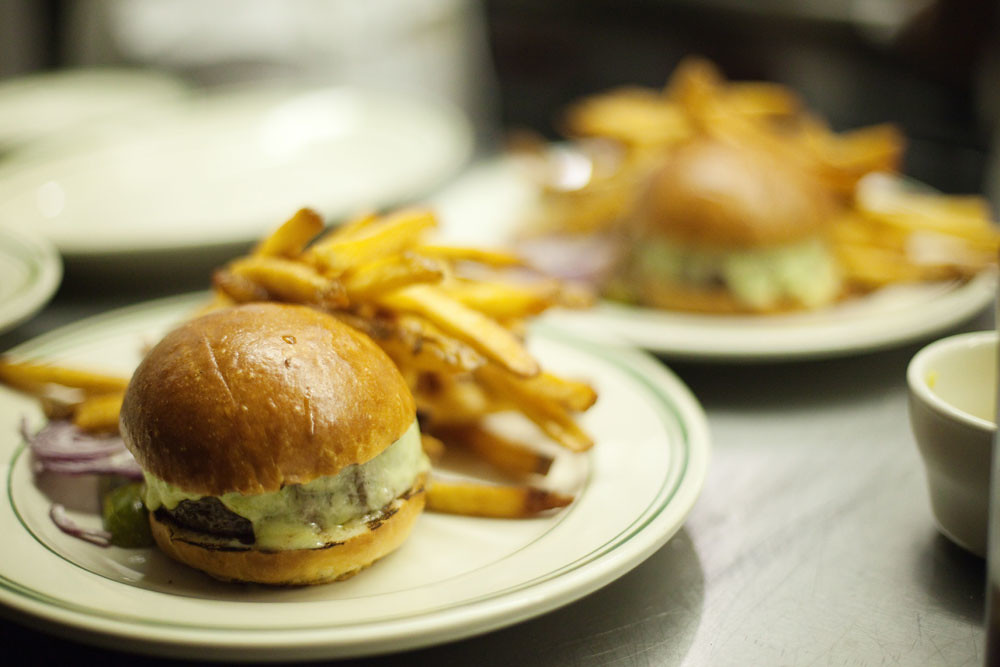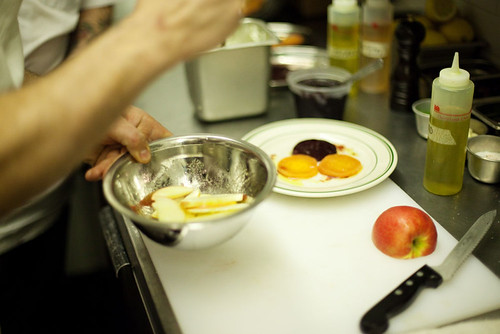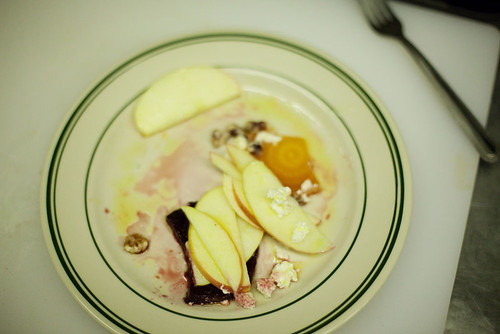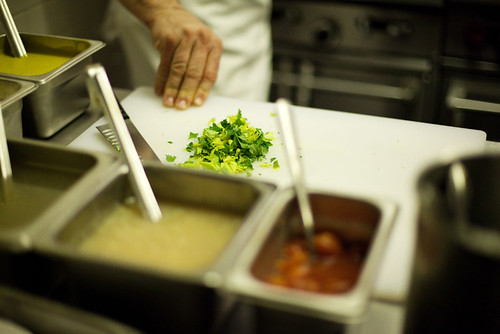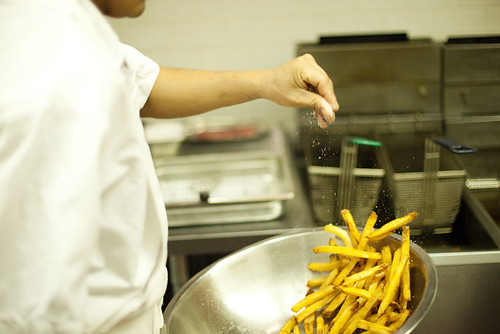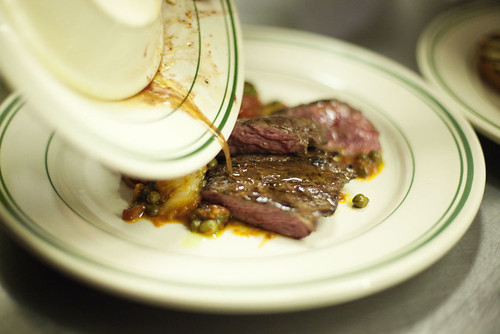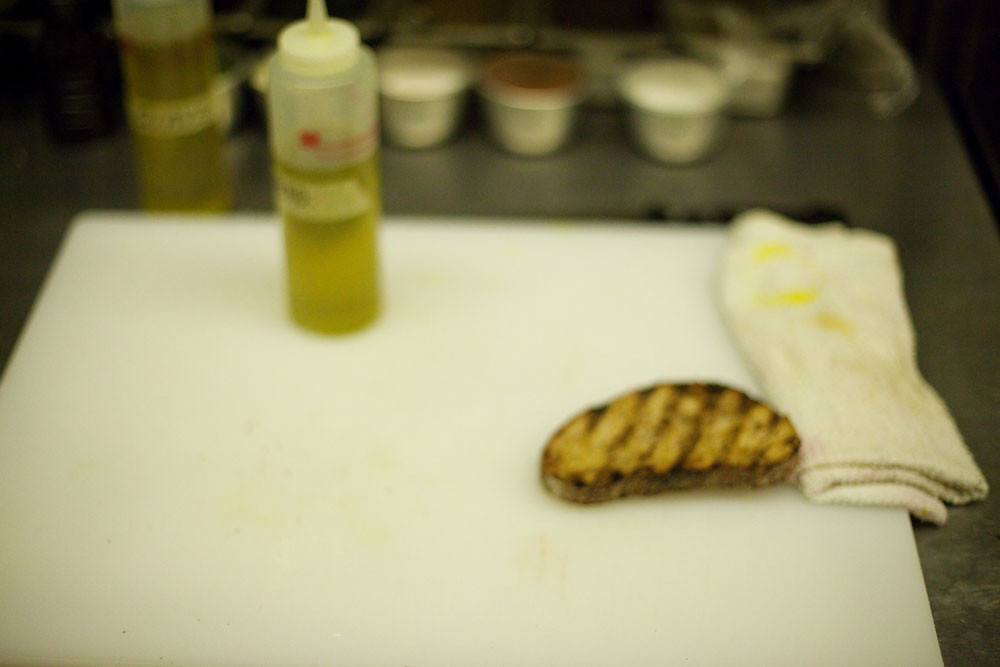I have seen my share of Bourdain eating in Asia and I know the food there, along with the culture and the atmosphere, is hundred times better than what you would get here in the states. My aunt lives in Taiwan and has been telling me about the famous night market eats. Just few years ago a bunch of my friends went to Thailand for a wedding and just wouldn't stop telling me about the chicken and rice dish and how good it was. *Sigh. Someday I say, someday. I guess in the mean time I'll just have to experience all the different foods and cultures through the photos of David Hagerman. He's a photographer and has been living in SE Asia for over a decade. Along with his wife, Robyn Eckhart, they make up the team behind the food blog EatingAsia. His photos are truly amazing and real. And when I say real I mean people that has been there for over a decade, that are passionate about what they write, what they photography, and what they're experiencing.
Q. Can you tell me what you’re trying to capture when you take your food photos? David. I've got this hang up where I like food to look real (go figure). Cooks, vendors, hawkers (especially in Asia) are artists in their own right and I don't want to do anything that draws the viewer's eye away from their artistry. So I'm not going to fuss with the dish too much. I want good lighting (or I will create good lighting) and clean backgrounds but otherwise I like for the dish to shine through on it's own. I like to get in close so that people can really see the texture and detail which is the next best thing to actually smelling and tasting a dish. But for me food photography isn't just about dish after dish (I bristle when I hear the term 'food porn') there should be a story which is what I hope to accomplish with my photography. I want people to see where ingredients come from, the vendors who sell them, the chef, the chef's hands. Each of those layers adds to the story and hopefully helps to mentally transport the viewer to that place.
Q. While walking through the streets, what will make you stop to take a photo? David. Someone (a marketing person for a US coffee chain, actually) once told me that I take pictures of ordinary things and make them look beautiful. Maybe she was just trying to make me feel good -- they didn't buy any of my images -- but it's kind of stuck with me. I like capturing moments of everyday life - it might be something in a market, or a street vendor, or I might see someone with an interesting face and ask them if I can do a portrait or just photograph them while they work. I'm a fairly curious guy so I stop often.
Q. Any photography heroes? David. Naomi Duguid was really an early inspiration. I think it was probably thumbing through Hot, Sour, Salty, Sweet while Robyn cooked when I said that I wanted to photograph full time. Her approach in using food as a doorway to cultures has always rung true to me. Food lets you connect in so many ways. Naomi, in her photographs and essays, connected so many of those dots for me.
Q. Do you feel that Malaysia has any influence on you as a photographer? David. Actually, every place I travel to has an influence on me. Cities, whether they are big or small have their own 'vibe' which I think as a photographer you can't help but pick up on. Malaysia is no exception, plus the fact that you do have a pretty heady mix of cultures here, which adds to its uniqueness
Q. Favorite city to take photos of food? David. I like Penang, especially George Town a lot. Street food is nearly a religion there so there's that. Everything is happening in the street, right in front of you. For a guy who loves shooting food it doesn't get any better than that.
That said, we are spending a lot of time in 2011 in Chiang Mai, collaborating with some Thais who grew up there on a book that will tell the history of, and document daily life in, the historic Gat Luang community and its food markets. I'm a "markets guy" and I have to admit that when it comes to markets it's tough to beat Thailand's -- especially northern Thailand's -- for their abundance, color, and activity.
Q. So I read the interview you and wife did at Table for Three, Please. What made you both decide to teach English in China? When did the love for Asia start? Robyn. Wow, a long time ago! I was a pre-veterinary medicine undergraduate in the early 80s when I took an elective history course. The professor was fantastic, and his area of specialty happened to be modern China. I changed my major to history and started studying Mandarin. (As you can imagine my parents were thrilled. Not.)
When I graduated with no job prospects (not unusual for history majors) he suggested I spend a year in China. I went to Sichuan University as a language student, a guineau pig for a new exchange program. That didn't work out, so I ended up teaching English. 1984-85 was an amazing time to be in Sichuan, the node of all the economic changes that were taking place at that time.
And I was lucky to land, quite by chance, in the province that's home to the most amazing cuisine. Sichuan food remains my favorite Asian food.
That pretty much sealed the deal for me and Asia I think. We returned to China/Hong Kong in 1994 and stayed for 5 years. Then I fell in love with the region all over again when we moved to Bangkok in 2002.
David. My parents were in the Philippines (my dad was a biologist assigned to the International Rice Research Institute) while I was still in college. I had several opportunities to visit them and credit that time for my getting the travel bug. When I met Robyn (at university) she was just heading off to China for a year of study. I thought that was cool and ended up joining her for the second half of her stay there. From there it seemed we just tried to find ways to get ourselves back here.
Q. What is the 1 thing that you both love about living in Malaysia? Robyn. The food, definately. You've got Indian, Malay, and several regional Chinese cuisines (Teochew, Hakka, Cantonese, Hokkien) here, as well as various permutations and amalgamations such as Nyonya/Peranakan cuisine. Eastern Malaysia (aka Malaysian Borneo) offers yet more specialties. I am a long-time (since China) fan of street food, and I love that it is accessible and appreciated in Malaysia. Municipal authorities here seem to understand how important hawker food is to Malaysia's population and so far there hasn't been the same kind of effort to eradicate it that there has been in some other parts of Asia.
David. Assam laksa and a 12 ringit (U$4) haircut (whoops that's 2, but Robyn doesn't go to my barber).
Q. Best meal so far in 2011? Robyn. That's easy. Fresh anchovies cooked for us by a fishmonger in his shop in Sinop, on Turkey's Black Sea coast. We drove to the Black Sea this last January, during hamsi season, specifically to gorge on the little fishes, but this was an unexpected treat. He dusted them lightly with flour and fried them in a skillet, and we ate with him and his colleagues and the occasional Sinop-ian who just wandered in off the street for a taste. That meal was easily one of the best of my life.
David. Fresh anchovies fried in a fisherman's shop in Sinop, Turkey. Maybe one of the best meals ever, frankly. One of those random encounters where our interest in food put us in just the right place at the right time. (By the way Robyn told me that was her answer too. Totally unplanned!)
All photos courtesy of David Hagerman from SkyBlueSky and EatingAsia.

